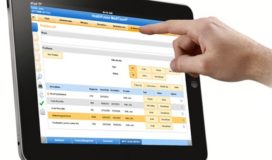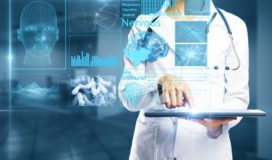Machine Learning in Healthcare
Nowadays, machine learning (which is a part of the whole artificial intelligence science) plays one of the biggest roles in many areas of our life – including healthcare. This may include different health-related aspects like the development of new medical procedures, dealing with patient data, and predicting outcomes of the treatment of diseases.
However, when it comes to predicting the outcome of surgeries and other medical treatments, the effectiveness of machine learning methods is only somewhat known, at least in terms of predicting the outcome using data collected from human doctors and other doctors.
Prediction of Disease Outcomes
Now, in a study in the Journal of the American Medical Association (JAMA) on July 12th, 2015, researchers from the University of Rochester Medical Center and the University of Illinois are reporting that machine learning may allow human doctors to make relatively accurate predictions of disease outcomes.
The researchers, led by Prof. Paul Nierenberg, have developed an algorithm that uses a collection of data, including patient data, to predict the disease and complication outcomes in surgery and other medical procedures by matching information from patients’ medical records with information from computer programs that calculate likelihoods of the outcome.
Prediction of Surgeries Outcomes
This information can then be used in pre-surgery analyses to anticipate the likely outcomes of a certain procedure.
“The current generation of diagnostic and surgical procedures is a combination of computerized simulation of the whole procedure and the patient’s medical history,” explains Dr. Brian Meech, senior author on the study and director of the Center for Medical Information at the University of Rochester Medical Center. “Unfortunately, the computer models only simulate risk-benefit analysis in a relatively small fraction of surgical procedures, often less than one percent.”
The study’s method of analysis had implications beyond just the potential effects of the procedure on the recipient’s medical condition. By comparing the risk of adverse events across surgical procedures for people of all ages, it was hypothesized that a greater number of procedures would have been performed prior to diagnosis and therefore in a different age range, making them less risky for adverse outcomes.
The new research analyzed the data from over 6,000 operations over the course of a 40-year period in the USA, the second largest population where such data were available.
Development of New Medications
The use of machine learning in preliminary (early-stage) drug discovery has the potential for various uses, from initial screening of drug compounds to predicted success rate based on biological factors.
It can potentially help predict drug efficacy and safety (which is one of the main goals of the development of new medications), as well as provide information about new ingredients that are potentially developing into new medications.
This new approach to the development of new medications is important because current approaches rely on the assumption that each compound has a specific, well-studied target, which limits the development of new medications to small groups of compounds. Also, the assumption has been that the “best” compound is the first one to reach clinical trials.
This means that many compounds that might do no harm, might have just a weak effect, or might prove harmful at high doses can get FDA approval, even though these compounds cannot be reliably studied as they may be more harmful with increasing dose.
Data Mining
Data mining is an increasingly important field of study in public health. By performing a variety of tasks, such as machine learning in search, data mining takes a wide variety of forms: applying a model based on data to extract meaning from a data set, extracting relevant variables from a data set, and then evaluating a model on these variables.
Data mining is a highly complex and interdisciplinary field of study that may range from basic data analysis to data mining and data interpretation.
Health IT



